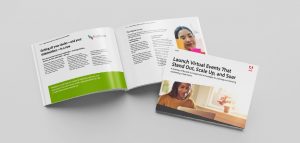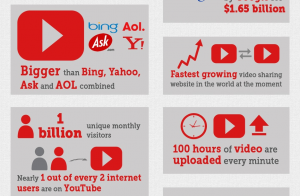When it comes to purchasing new products or services for a company, an abundance of thought goes into the process. As a marketer, how does one tap into that process to get to the nuts and bolts of what a consumer is trying to do? It begins with where they buy, how they buy, and who they buy from. More than likely, the consumer is going to go to a vendor they trust. To build that trust vendors have to break down the buying process and see exactly how the consumer consumes.
Business-to-business relationships focus on industry-specific needs and provide tools and services to make businesses more efficient and cost effective. Choosing the right product to achieve those goals is a testament to the evaluation skills purchasing agents have to assess what their company needs and then appraising what’s available in the market. Whether it’s new financial software, HR training materials, data recovery services, and much more, the decision-maker has a heavy task of picking what’s the right fit for their requests. That’s why the buying process always begins with:
Addressing a Need or Pain
A consumer is going to be shopping for a new product when they have a want or a need to satisfy. Timing such an opportunity is a task for the market. Sometimes it’s reflective of a business trend that’s becoming more popular, growth in the consumer’s company or industry, or the replacement of outdated or broken equipment. This provides the marketer with the advantage of servicing that particular need. The scenarios listed will encourage a consumer to go shopping, but what really drives a profitable buying process is for the marketer to target consumers and pinpointing their needs even before they’re aware of them.
To do this, the vendor must have a strong knowledge of their client-base. Locking in new customers by targeting a brand specifically to a chosen market is a successful way of assessing a want or need. But the most satisfying results are by building a dedicated client base. Lasting relationships with existing clients will allow the marketer to know when their clients are ready to buy and prevent them from seeking products from competitors. Which leads us to:
Evaluating the possibilities
Everyone wants to get the most ‘bang for their buck’. Cost and quality are two key components consumers gauge when they’re going through the buying process. They want a product that meets their budgetary needs but also provides solid results. Providing feature sheets and blogging about the content of their products, marketers can instruct consumers on what they have to offer. Tutorial videos and utilizing social media are also keen ways to show off a product in this current marketplace.
What vendors aim for is ‘selling without selling’. Consumers want education; they want to make a knowledgeable decision about what they’re purchasing without feeling coerced or bullied. By reaching out to their consumers on a regular basis, by building those relationships, marketers can better understand what their clients are looking for. They become part of the buying process by being available, informative, and consistently aware of what their clients need. Consumers are going to shop. They’re going to compare what’s in the market without making a decision on the first thing they see. But by having a time-honored bond with their clients, marketers will see more sales. Consumers value those traditional connections, the reputations they’ve garnered with each other, and the time both have invested in their association.
Post-Purchasing Assessment
Equally important is the considerate follow-up made post-purchase. A client’s well-being is first and foremost in any vendor’s mind. Whether they’re assisting with training and implementation on the new product or not, any merchant worth their salt will ensure their customers are having a fruitful experience with their product.
Such a follow-up can be a simple phone call or email, touching base and checking in. A survey asking for feedback on a consumer’s experience and use of the product is also helpful. Receiving testimonials is a brilliant way to market a product in the future. If the vendor is assisting with training/implementation, be sure to have a dedicated consultant doing the work who is readily available for instructional sessions, meets deadlines, and readily answers any questions the client may have. Resuming a calendar of client reach-outs will also bolster the relationship the marketer has already established, and now a new product is in the client’s use, these regular reach-outs will give the vendor an opportunity to see if everything is fitting all of the client’s needs.
The buying process for any business is a tried-and-true experience for a vendor. It takes a nurturing manner where all parties communicate what they’re looking for and the best method to go about meeting those needs. Providing a quality, cost-effective purchase to a client will build the reputation of a vendor like no other marketing tool. Successful word-of-mouth and cultivation of a relationship are both outstanding and necessary to shine in competitive industries. Any consumer would be delighted to continue such a fruitful association.
Business & Finance Articles on Business 2 Community(61)





